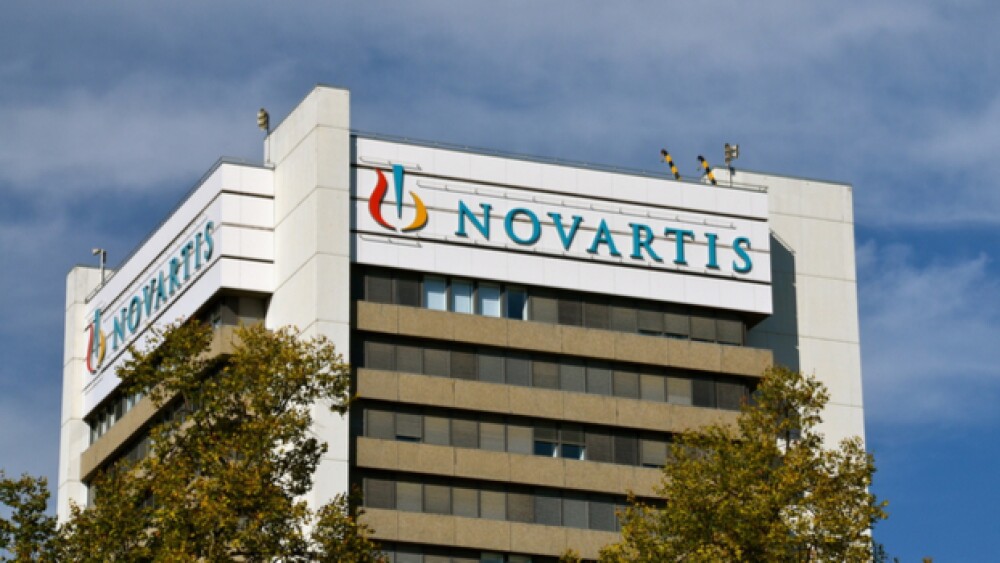Novartis’s QMF149 met its primary and key secondary endpoints in the Phase III QUARTZ clinical trial for asthma. QMF149 is a once-daily, fixed-dose combination therapy containing indacaterol acetate, a long-acting beta agonist, and mometasone furoate, an anti-inflammatory.
lucarista / Shutterstock
Novartis’ QMF149 met its primary and key secondary endpoints in the Phase III QUARTZ clinical trial for asthma.
QMF149 is a once-daily, fixed-dose combination therapy containing indacaterol acetate (IND), a long-acting beta agonist, and mometasone furoate (MF), an anti-inflammatory. It is being developed to treat inadequately controlled asthma. It has been accepted for review by the European Medicines Agency (EMA). The second ingredient, mometasone furoate is exclusively licensed to Novartis from Merck & Co. for use in QMF149.
The combination drug showed statistically significant improvements in lung faction. The lung function was measured by trough FEV1, which is the volume of air that can be forced out in one second after taking a deep breath. The combination drug was compared to mometasone furoate (MF) alone after 12 weeks of treatment in adults and adolescents.
“Despite the number of available treatments, many patients’ lives remain impacted by their asthma,” stated Linda Armstrong, Novartis’ Respiratory Development Unit Head. “The QMF149 results of the QUARTZ study complement the recently presented Phase II data of QVM149 at the 2019 American Thoracic Society Congress, showing superiority of QVM149 to the current standard of care. We look forward to seeing the rest of the data from the PLATINUM clinical trial program.”
In addition to improved trough FEV1, the combination therapy showed lung function benefit by improvements in PEF compared to the MF. IND/MF showed statistically significant improvements in other measures of lung function over MF alone as well, such as by ACQ-7 after 12 weeks.
Both IND/MF and MF alone were generally well tolerated. The overall number of adverse events was lower in the IND/MF group compared to the MF group. Most adverse events in both groups were mild to moderate in severity and were comparable between both cohorts.
“I am very pleased with the results of the QUARTZ study looking at the efficacy and safety of the fixed-dose combination of indacaterol and mometasone furoate,” stated Oliver Kornmann, Pulmonary Department, Internal Medicine, University Hospital Mainz, Germany. “Fixed-dose combination inhalers may offer advantages to people with asthma by simplifying complex inhaler regimens, especially when they can be dosed once daily which can therefore further reduce the burden of the disease.”
The PLATINUM clinical development program is developing both QMF149, which is what is being reported on today, and a triple formulation, QVM149. QVM149 is a combination of indacaterol acetate, glycopyrronium bromide and mometasone furoate (IND/GLY/MF). This combination has also been accepted for review by the EMA. Glycopyrronium bromide is a long-acting muscarinic receptor antagonist. Glycopyrronium bromide has been exclusively licensed to Novartis since April 2005 by Sosei Heptares and Vectura.
There are four clinical trials that are part of the PLATINUM clinical development program. QUARTZ, which is being reported here, compares IND/MF to MF. The PALLADIUM trial compares IND/MF to MF and salmeterol/fluticasone. The IRIDIUM trial compares IND/GLY/MF to IND/MF and salmeterol/fluticasone. And the ARGON trial compares IND/GLY/MF to a combination of salmeterol/fluticasone and tiotropium.
Salmterol/fluticasone is marketed under the Advair brand name by GlaxoSmithKline. Tiotropium bromide is marketed as Spiriva Respimat by Boehringer Ingelheim.





